Boost Your Fitness Journey with Insights from PLOS One
Unlock science-backed fitness tips from PLOS One to enhance your workout routine. Discover actionable insights today!
Overview of PLOS One
Introduction to PLOS One
PLOS One is a peer-reviewed open-access scientific journal published by the Public Library of Science (PLOS). Established in 2006, it is known for its broad scope, covering all areas of science and medicine.
The journal aims to accelerate the dissemination of research by providing a platform for researchers across various disciplines to publish their findings.
Open Access Model
PLOS One operates under an open access model, meaning that all articles are freely available to the public immediately upon publication. This model supports the principle that research should be accessible to everyone, regardless of their ability to pay for journal subscriptions.
By removing financial barriers, PLOS One facilitates the wider dissemination and impact of scientific research.
Editorial and Peer Review Process
The editorial process at PLOS One is designed to be rigorous yet efficient. The journal employs a team of academic editors who oversee the peer review process.
Manuscripts submitted to PLOS One are evaluated based on their methodological rigor and ethical standards, rather than their perceived significance or impact. This approach ensures that sound science is published, allowing the community to determine the importance of the findings.
Multidisciplinary Scope
PLOS One is unique in its multidisciplinary approach, welcoming research from all scientific disciplines.
This inclusivity encourages cross-disciplinary collaboration and innovation, as researchers from different fields can access and build upon each other’s work. The journal’s broad scope also means that it publishes a wide variety of article types, including research articles, systematic reviews, and meta-analyses.
Impact and Reach
As one of the largest open-access journals in the world, PLOS One has a significant impact on the scientific community.
Its articles are widely read and cited, contributing to the advancement of knowledge across various fields. The journal’s commitment to open access ensures that its content reaches a global audience, including researchers, educators, policymakers, and the general public.
Publication Process and Criteria
Initial Submission
PLOS One requires authors to submit their manuscripts through its online submission system.
The initial submission must include the main manuscript file, figures, tables, and any supplementary materials. Authors are also required to provide a cover letter that outlines the significance of the research and confirms that the work has not been published elsewhere.
Editorial Screening
Once submitted, the manuscript undergoes an initial editorial screening.
During this phase, the editorial team checks for adherence to PLOS One’s submission guidelines, ethical standards, and overall scientific quality. Manuscripts that do not meet these basic criteria may be returned to the authors for revision or rejected outright.
Peer Review Process
PLOS One employs a rigorous peer review process to ensure the quality and integrity of published research.
The journal uses a single-blind review system, where reviewers remain anonymous to the authors. Reviewers assess the manuscript for methodological soundness, data accuracy, and the validity of conclusions drawn.
Importantly, PLOS One does not evaluate manuscripts based on perceived impact or significance, focusing instead on scientific rigor.
Revisions and Resubmission
If the reviewers recommend revisions, authors are given the opportunity to address the comments and resubmit their manuscript. The revised submission should include a detailed response to the reviewers’ comments, highlighting changes made to the manuscript.
This iterative process may involve multiple rounds of review and revision before a final decision is made.
Acceptance Criteria
PLOS One accepts manuscripts based on the criteria of scientific validity and technical quality. The journal does not consider the perceived importance or novelty of the research as a criterion for acceptance.
Instead, it focuses on whether the research question is well-defined, the study is methodologically sound, and the conclusions are supported by the data.
Publication and Accessibility
Once accepted, articles are published online and made freely accessible to the public under an open-access license. PLOS One is committed to disseminating scientific knowledge widely, ensuring that research findings are available to researchers, practitioners, and the general public without subscription barriers.
Impact and Citations
Significance of Impact
PLOS One is a multidisciplinary open-access journal that has significantly influenced the scientific community.
Its broad scope and inclusive publication criteria have allowed researchers from various fields to disseminate their findings widely. This inclusivity has contributed to a diverse range of studies being accessible to a global audience, enhancing the journal’s impact across multiple disciplines.
The journal’s commitment to open access ensures that research is freely available to anyone with internet access, removing barriers to knowledge dissemination.
This accessibility has increased the visibility and reach of published articles, thereby amplifying their impact on the scientific community and beyond.
Role of Citations
Citations play a crucial role in measuring the impact of articles published in PLOS One. They serve as a key indicator of the research’s influence and relevance within the scientific community.
Articles that receive a high number of citations are often considered to have made significant contributions to their respective fields.
PLOS One articles are frequently cited due to the journal’s reputation for rigorous peer review and high-quality research. The open-access model further facilitates citations by allowing unrestricted access to the content, enabling researchers worldwide to reference and build upon the work published in the journal.
Metrics and Evaluation
To evaluate the impact of articles, PLOS One employs various metrics, including citation counts, altmetrics, and article-level metrics.
These tools provide a comprehensive view of an article’s reach and influence, considering both traditional citations and alternative measures such as social media mentions and online discussions.
Article-level metrics offer valuable insights into how research is being accessed, shared, and discussed in real-time. This approach allows authors and readers to gauge the immediate impact of an article beyond conventional citation counts, providing a more nuanced understanding of its significance in the scientific discourse.
Future Trends and Developments
Open Access Expansion
The future of PLOS One is closely tied to the broader expansion of open access publishing.
As more researchers and institutions advocate for unrestricted access to scientific knowledge, PLOS One is likely to play a pivotal role in this transition. The journal’s commitment to open access aligns with global efforts to democratize information, ensuring that scientific discoveries are accessible to all, irrespective of geographical or economic barriers.
Technological Integration
Advancements in technology are set to revolutionize the way research is conducted and disseminated.
PLOS One is expected to leverage cutting-edge technologies such as artificial intelligence and machine learning to enhance the peer review process, improve manuscript handling, and personalize content delivery. These innovations will streamline operations and provide a more efficient and user-friendly experience for authors and readers alike.
Interdisciplinary Research
As scientific challenges become more complex, the importance of interdisciplinary research continues to grow.
PLOS One is well-positioned to support this trend by fostering collaborations across diverse fields. The journal’s inclusive scope encourages submissions from various disciplines, facilitating the cross-pollination of ideas and promoting innovative solutions to global problems.
Data Transparency and Reproducibility
The push for greater data transparency and reproducibility in research is gaining momentum.
PLOS One is expected to lead the charge by implementing policies that require authors to share their data and methodologies openly. This commitment will enhance the credibility of published research and enable other scientists to validate and build upon existing work, ultimately advancing scientific knowledge.
Global Collaboration and Inclusivity
In the coming years, PLOS One aims to strengthen its role as a platform for global collaboration.
By actively engaging with researchers from underrepresented regions and promoting inclusivity, the journal seeks to diversify the voices contributing to scientific discourse. This approach not only enriches the research landscape but also ensures that a broader range of perspectives is considered in addressing worldwide challenges.
FAQ
Q1: How can PLOS One research help beginners manage soreness in fitness training?
A1: PLOS One publishes a wide range of studies that can provide insights into managing soreness for beginners in fitness training. Research articles often explore the effectiveness of different recovery methods, such as stretching, hydration, and nutrition, which can help alleviate muscle soreness. Beginners can use this information to adopt evidence-based practices that enhance recovery and minimize discomfort after workouts.
Q2: How often should beginners train according to studies published in PLOS One?
A2: Studies published in PLOS One suggest that beginners should start with a moderate training frequency, such as 2-3 times per week, to allow their bodies to adapt to new physical demands. These studies emphasize the importance of rest and recovery, indicating that overtraining can lead to increased risk of injury and burnout. As beginners become more comfortable and their fitness levels improve, they can gradually increase their training frequency based on their goals and physical capacity.
Q3: What solutions does PLOS One research offer for advanced users facing a plateau in their fitness progress?
A3: Advanced users experiencing a plateau can find valuable insights in PLOS One research, which often explores various strategies to overcome stagnation in fitness progress. Studies may highlight techniques such as periodization, varying workout intensity, and incorporating cross-training to stimulate new muscle growth and improve performance. Additionally, research on nutrition and recovery optimization can provide advanced users with strategies to enhance their overall training effectiveness and break through plateaus.
Takeaway
“Ready to crush your fitness goals and unleash your inner strength? Start your new workout challenge today! Download our FREE training plan to kickstart your journey towards a healthier, stronger you. Join our vibrant and supportive fitness community to stay motivated and inspired every step of the way. Let’s sweat, smile, and succeed together! Take the first step now and transform your body and mind. Are you in?”











Comments